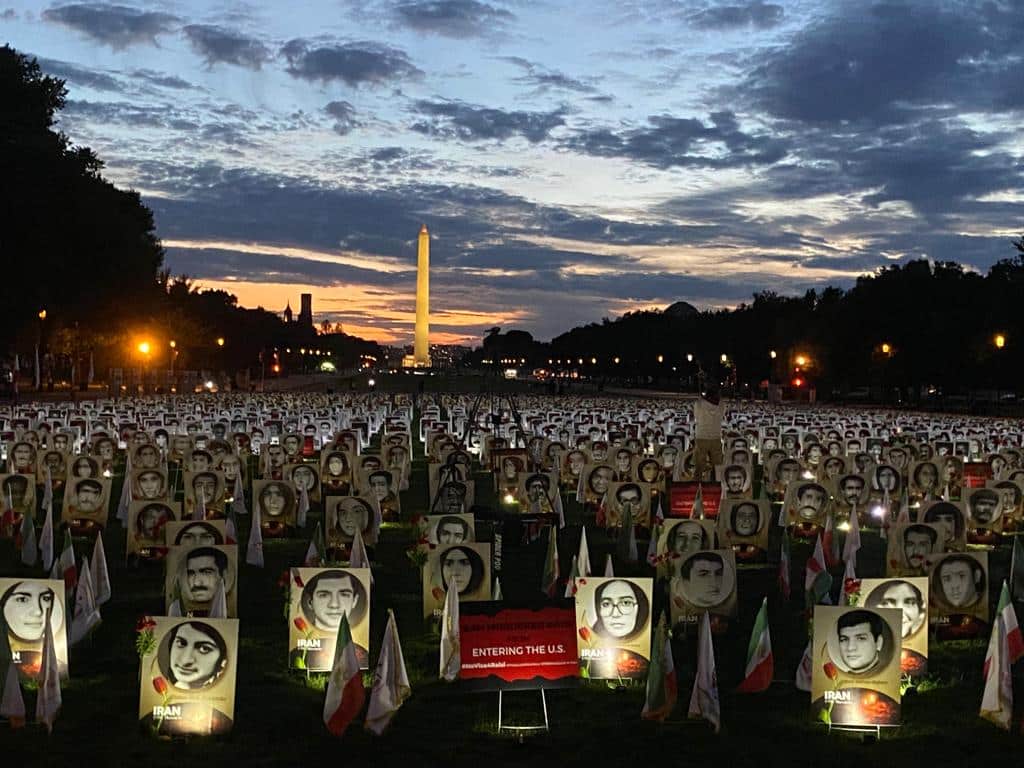
Three months after the start of the nationwide popular uprising, the Islamic Republic reverts to its self-defense strategy of execution.
Mohsen Shekari, a protester who took part in the Iranian uprising, was executed in Tehran on December 8. Despite unprecedented international condemnation, Majidreza Rahnavard was hanged in public in Mashhad four days later on the same charge, “moharebeh” or “waging war on God.” More than 30,000 protesters arrested in Iran in the last three months for participating in the uprising have been sentenced to death by the mullahs’ regime’s courts and are awaiting execution.
From December 7 to 14, or within one week, 24 more people were executed in 13 cities across Iran. Twelve of them were executed on the same day, December 12. The mullahs’ regime established its power from the start through internal repression and the export of terrorism abroad. Although the regime’s internal repression knows no bounds in terms of methods, hanging and public execution have been the primary and symbolic means of repression.
From the beginning, the mullahs started their malign nuclear program and used execution to create the terror required to stabilize their government and ensure their rule’s continuity. In response to the demands of Kurds and other nationalities, the government had to resort to execution a few months after the mullahs took power following the fall of the Shah. Sadegh Khalkhali, Khomeini’s religious hanging judge, gained worldwide notoriety at the time.

The mullahs’ regime established its power from the start through internal repression and the export of terrorism abroad.
In June 1981, the regime’s political suffocation forced the Iranian people to resort to armed resistance. The wave of executions used to crush the resistance was unprecedented in regime history and proportionate to the regime’s existential threat.
On June 20, 1981, twelve adolescent female students were shot without having their identities verified. The next day, the authorities published their photos in state newspapers and demanded that relatives collect their bodies. The regime executed nearly 200 children in October of the same year.
After the demonstrations engulfed Tehran on September 27, 1981, the mullahs executed 1,200 protesters in a hurry. Beginning in July 1988, and lasting only a few months, 30,000 political prisoners, primarily from the People’s Mojahedin, who remained loyal to the regime’s opposition, were executed.

Beginning in July 1988, and lasting only a few months, 30,000 political prisoners, primarily from the People’s Mojahedin, who remained loyal to the regime’s opposition, were executed.
The misconception was that after such a massive purge of the opposition, the regime’s execution machine would slow down and eventually stop. However, reliable statistics from human rights organizations and UN reporter testimonies show that the regime has kept the world’s highest number of executions in proportion to its population.
Khomeini’s and now Khamenei’s use of Sharia and religious law to justify the use of the death decree is pure deception. The double standard used to implement this “divine decree” demonstrates the mullahs’ deception.
Unlike the mullahs, Mrs. Maryam Rajavi’s 10-point plan includes the abolition of the death penalty and Iran’s non-use of nuclear weapons. No democratic government in Iran can maintain the mullahs’ regime’s stability. No one will ever be able to rule Iran through the gallows or a firing squad thanks to the blood shed by the mullahs, even from the best of Iran’s children.
Clearly showing #Iran mullahs' regime sees no way other than executions out of its crisis. International community should hold them to accountability. #NoImpunity4Mullahs https://t.co/aS0S7VpUL4
— Aladdin Touran (@AladdinTouran) March 2, 2021
MEK Iran (follow us on Twitter and Facebook), Maryam Rajavi’s on her site, Twitter & Facebook, NCRI (Twitter & Facebook), and People’s Mojahedin Organization of Iran – MEK IRAN – YouTub

